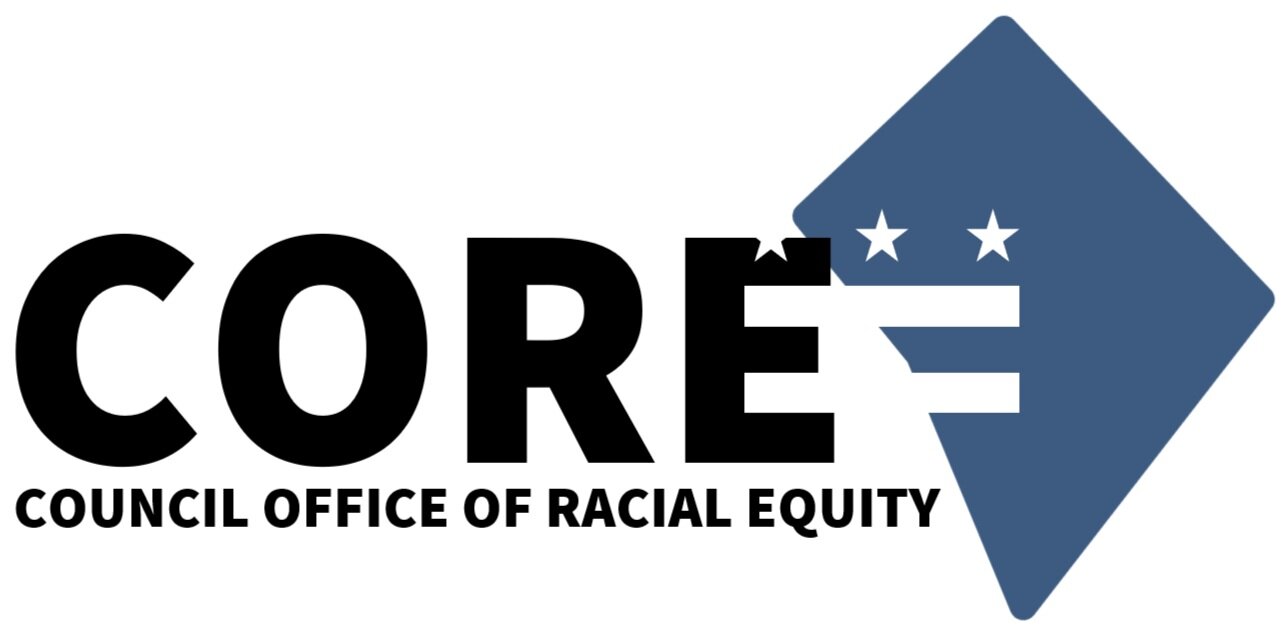
Racial Equity Impact Assessments
According to District law, “racial equity” means “the elimination of racial disparities such that race
no longer predicts opportunities, outcomes, or the distribution of resources for residents of
the District, particularly for persons of color and Black residents.”
As the Council Office of Racial Equity, our most important job is to figure out whether Council’s law
and policy proposals will make progress toward racial equity—or exacerbate racial inequity. To
accomplish this task, we conduct Racial Equity Impact Assessments, or REIAs. Explore this
page to learn what a REIA is and how we conduct them.
For information on how to request a REIA, see our page on requesting REIAs.
What is a REIA and what is its purpose?
A Racial Equity Impact Assessment (REIA) is a careful, organized, and public examination of how a proposed bill will affect different racial and ethnic groups in the District of Columbia. A REIA helps Councilmembers, staff, and the community make decisions about bills by answering one central question: “if this bill passes, how will it impact Black, Indigenous, and other residents of color in the District of Columbia?”
Racial inequity is often unconsciously replicated when racial equity is not consciously addressed. In other words, we will continue to preserve and reinforce racial inequity unless we make a conscious effort to do something different. A REIA supports that conscious effort.
Typically, each REIA is organized into five sections:
Overview
This section includes the bill name and number, the name of the committee that requested the REIA, a summary of the bill, high level statements about the bill’s racial equity impacts, further considerations, and a conclusion.
This section provides a map of the REIA—but is not meant to replace or capture the entire context of the assessment.
Background
This section explains what the bill does. It also includes information such as historical context, relevant research, and data relating to race and the policy topic area.
Racial Equity Impacts
This section describes the bill’s impact on racial equity and/or potential outcomes for Black, Indigenous, and other residents of color in the District if the bill becomes law.
Further Considerations
This section highlights opportunities to improve outcomes for the District’s Black, Indigenous, and other residents of color.
Assessment Limitations
This section acknowledges the limitations of our Racial Equity Impact Assessments. These are consistent across REIAs and note that:
We generally do not provide policy solutions or alternatives to address our racial equity concerns.
Assessing legislation’s potential racial equity impacts is a rigorous, analytical, and organized undertaking—but it is also an exercise with constraints.
Regardless of our final assessment, the legislation can still pass.
This assessment aims to be accurate and useful, but omissions may exist.
Every REIA has these sections, though sometimes they are arranged differently due to a bill’s length or content.
How is a REIA drafted?
CORE analysts write a REIA by following this general process:
First, we study the proposed legislation.
To analyze a bill, we must understand it. What is it doing? Is it a new law? Is it amending an existing law? What is its legislative history—as in, how did the bill get to this point in the process? To answer these questions, we speak to the relevant committee, reference the DC Code, and talk to other CORE team members. We even translate the bill from legal jargon to plain language so that we can wrap our heads around it. We include this “plain language rewrite” of the bill in our REIA so that everyone reading our work can understand what the bill is doing before diving into our analysis.
Next, we complete our background research by:
highlighting data on current racial inequities,
bringing attention to relevant history and racial trauma,
reviewing research about the policy intervention,
listening to those who testified at the bill’s hearing,
reading the news to understand additional perspectives about the topic,
examining who was “at the table” during the bill’s development,
amplifying the voices of Black, Indigenous, and other residents of color,
understanding how the bill will operate in practice.
This research aims to answer questions such as:
What events and decisions led to the racial inequities we see today?
Who had institutionally or socially recognized power to influence this process? Who did not?
What have residents been saying about this topic?
What is the resident experience from start to finish?
What are other jurisdictions doing? What have other jurisdictions learned about this policy area and this policy change?
Finally, we use our research to analyze a bill’s racial equity impacts.
Racial equity impact statements are drafted in a consistent fashion. Below are some examples:
This bill will harm health outcomes of the District’s Black residents, Indigenous residents, and other residents of color.
This bill will have a negligible impact on the lives of the District’s Black residents, Indigenous residents, and other residents of color.
This bill will likely make progress toward racial equity in the District of Columbia.
We spent a significant amount of time developing (and re-developing) our approach to analyzing bills and drafting our conclusions. For an in-depth explanation, see our blog post: Symptoms and Structures: Reimagining Racial Equity Impact Assessments.
If a REIA concludes a bill will contribute to racial inequity, can it pass?
Yes. Council Rules say that the Council can still consider or pass a bill regardless of a REIA’s findings. In other words, a REIA is not binding.
However, according to the Council Period 25 Rules, “where a Racial Equity Impact Assessment identifies a negative impact on racial equity, the bill may be placed on the non-consent agenda.”
In addition, a summary of the REIA and the committee’s response to the REIA must be included in the bill’s Committee Report.
Can I read a REIA?
Yes! All completed REIAs are publicly available in our REIA database.
Header mural painted by Eric B. Ricks as part of DPW's MuralsDC program.
